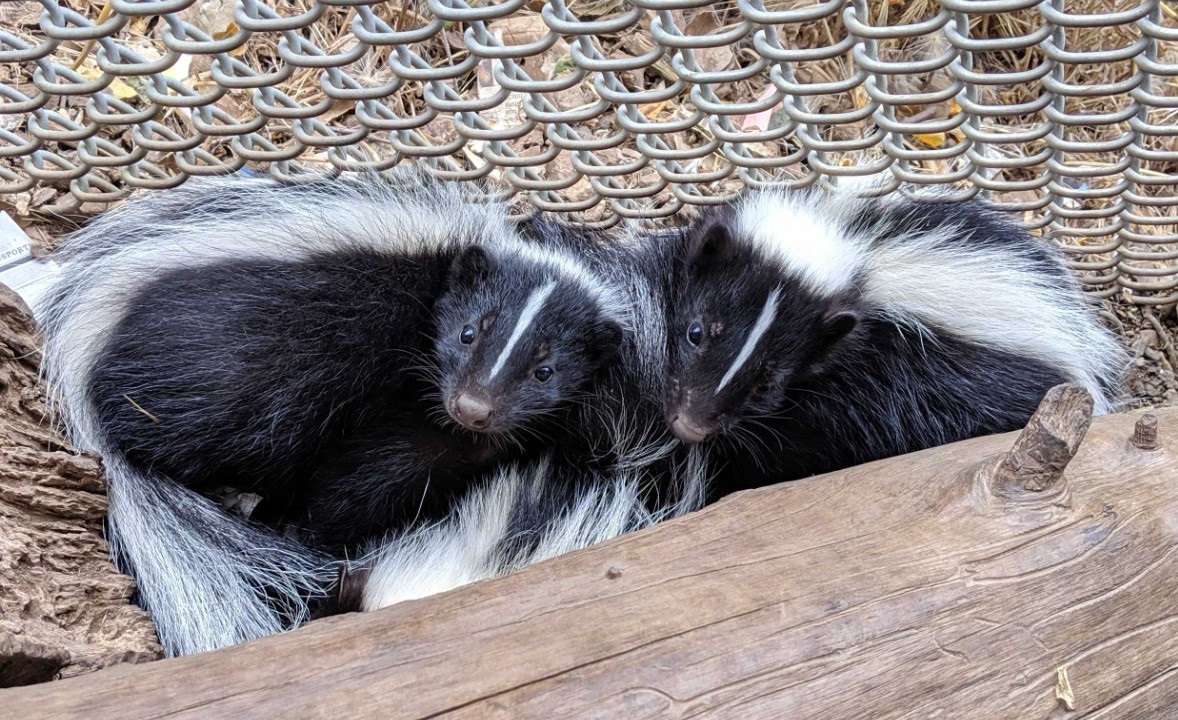Skunks, Smelly or Sweet?
By Cori Carlson, Administrative Assistant

Striped Skunks
Photo by Rebecca Hernandez
California Wildlife Center has admitted 25 Striped Skunks so far this year. That’s up from last year’s total of 19 patients. Best known for their smelly self-defense tactic and distinctive white stripes and black coat, this particular native species of Skunk ranges throughout North America from Southern Canada to Northern Mexico and are easy to identify with two thick white stripes along their back and tail. Variations in color are possible, though. This year, we admitted one with white armpits.
Their pungent-smelling spray comes from two glands located near the base of their tail. Young Skunk kits are capable of spraying when they are as young as eight days old. This line of defense can give the small mammals a bad reputation, but they will warn animals or people before spraying. They arch their backs, raise their tail, hiss, stomp their feet and sometimes do a handstand.
When a Skunk is admitted to CWC, they are initially quarantined for a week as they can carry rabies or distemper, a viral disease that affects the respiratory, gastrointestinal, and central nervous systems. Due to this risk, it’s important not to touch or pick up a Skunk with your bare hands. Once they are determined to be healthy, we give them a distemper vaccine and put them into an enclosure with up to four other Skunks.
Skunks are omnivores, meaning they eat both plants and animals. When a kit is admitted into our care, they are initially fed a special milk-replacement formula. When they move onto solid foods, they eat a special mix of dry dog food, vegetables and a variety of either mice, mealworms, super worms or crickets. This is very similar to their diet in the wild, which consists of insects, small mammals, fruit and plants.
While in our care, we also give them enrichment boxes that help them use their excellent sense of smell and hone their hunting skills. The boxes have worms, fish, vegetables, or fruit hidden under leaves for them to find. We also put exercise wheels in the Skunk enclosures. They look similar to those you might see a Hamster run on but much bigger. They seem to love the wheels, and occasionally one will push another out to get a turn.
When the Skunks are ready to go back into the wild, we generally limit the number released at any one site to two or three. We do this because we want to make sure there are enough resources to give them the best chance to thrive back out in the wild.

“Eau de skunk” used to be Silver Lake’s summer fragrance. Unfortunately, there seem to be fewer and fewer skunks there, shut out by high walls and impenetrable fences. Atwater Village still remains open and hosts skunks and opossums, our friends of the night.
Hi Rima,
Yes that is a real issue facing skunks and any non-fence climbing animal.